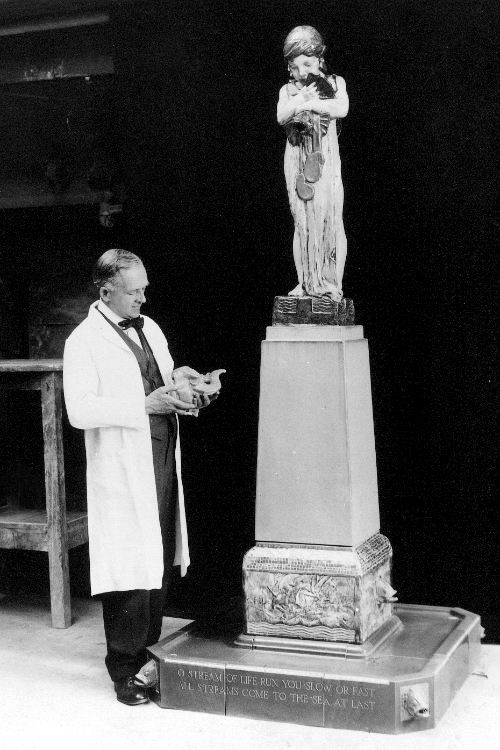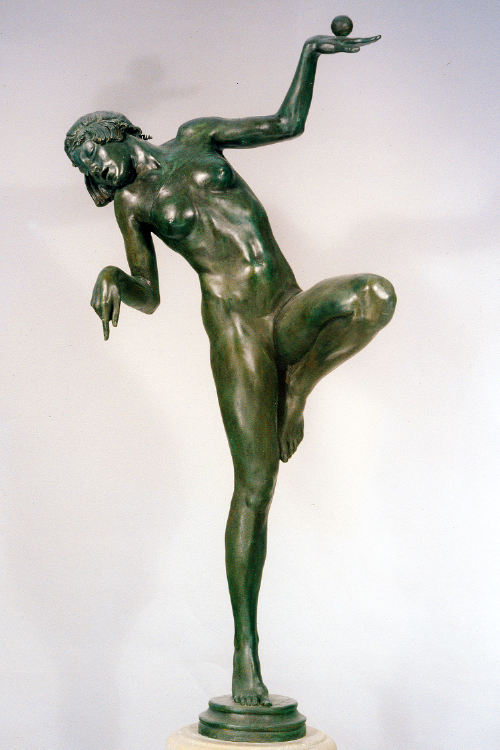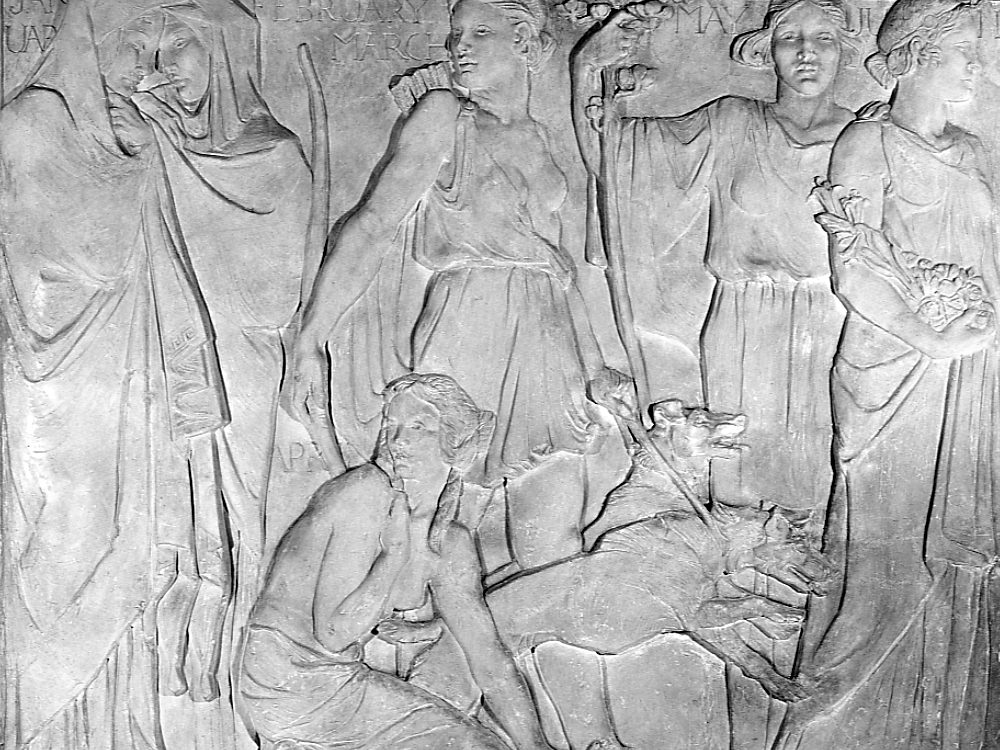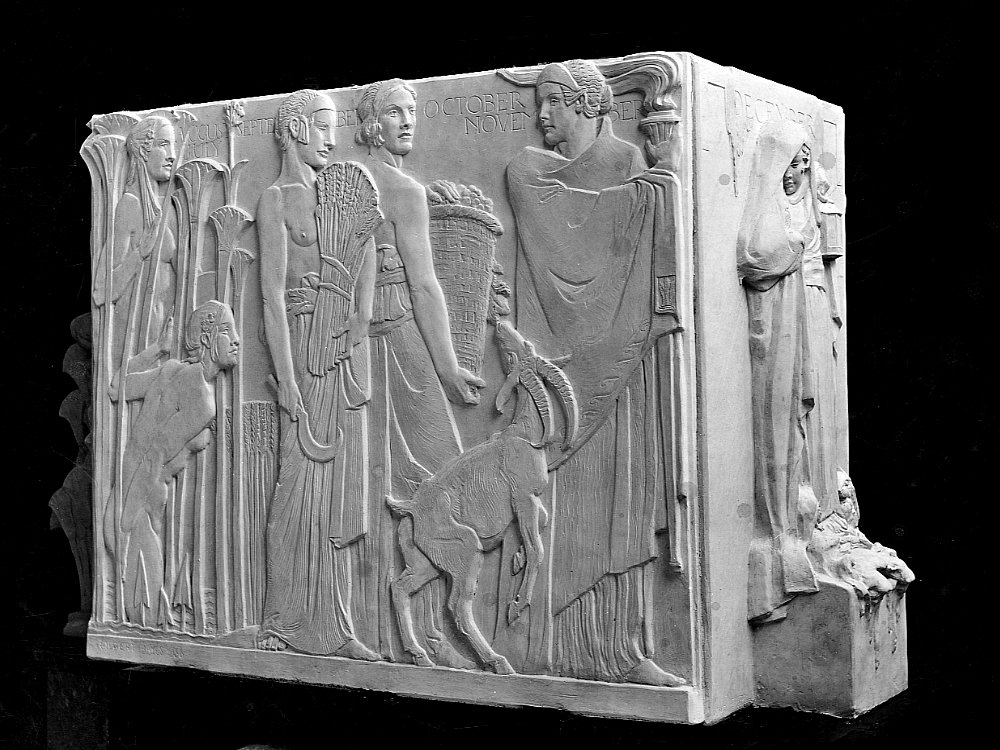Sculpture & the Garden
Polychrome Stoneware
In 1923, after working in conventional materials, Bayes began experimenting with a colourful ceramic body known as polychrome stoneware, which was made at the Royal Doulton pottery in Lambeth. This material was not only available in a wide range of colours but also resistant to frost and erosion, which made it ideal for a garden setting. The first example of the use of this new material was the Blue Robed Bambino of which Bayes had one version installed in his garden, while the other was slightly modified and made for the International Labour Offices in Geneva. On the base of this latter work were words inscribed by Bayes and of his own composition 'O Stream of Life run you slow or fast all streams come to the sea at last'.








